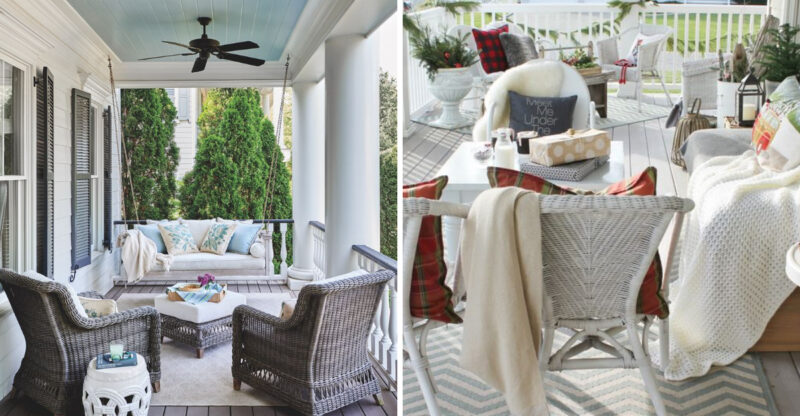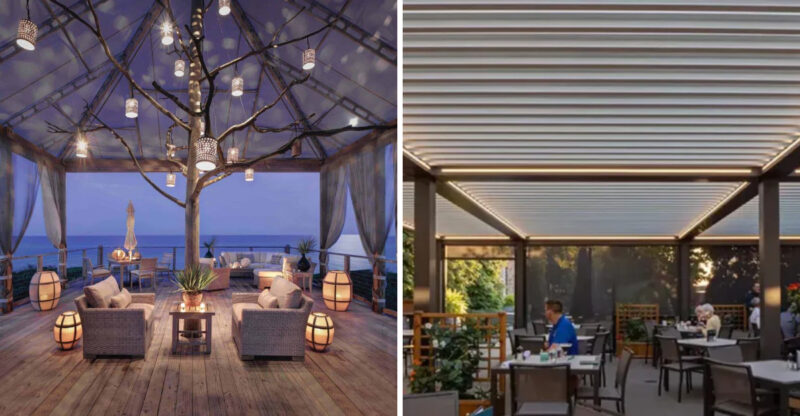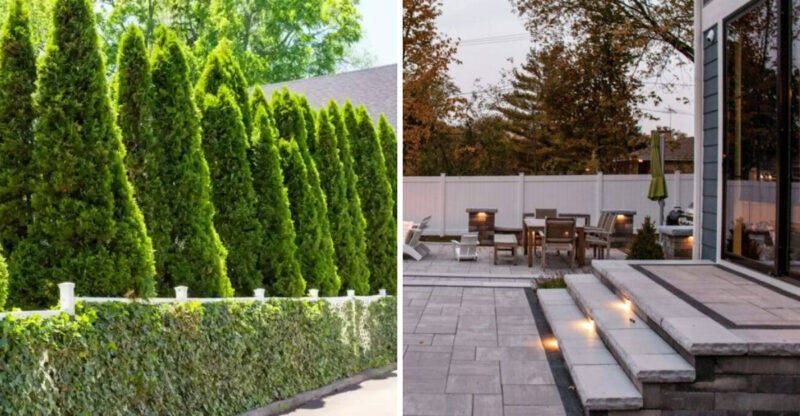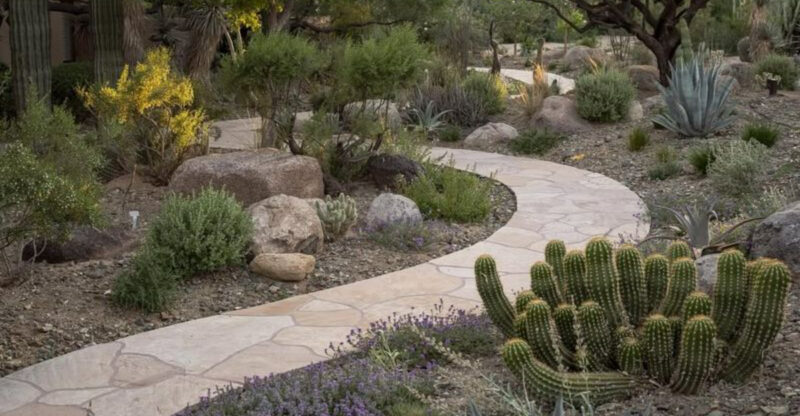10 Popular Outdoor Styles Found Across Washington Plus 3 Iconic Local Favorites
Washington state’s architecture tells a story of diverse influences, from pioneer settlers to modern designers.
The Evergreen State’s homes reflect both its rainy climate and stunning natural landscapes, creating unique outdoor styles you won’t find anywhere else.
Whether you’re house-hunting or just admiring neighborhood gems, these distinctive architectural styles showcase what makes Washington homes special.
1. Craftsman Bungalow
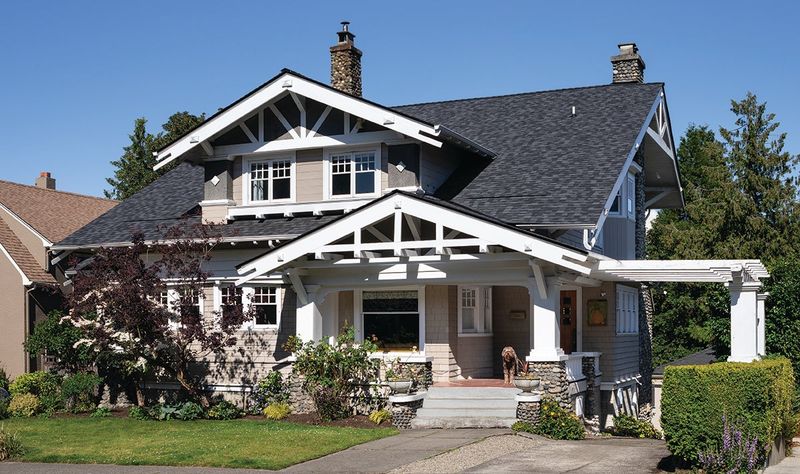
Nestled throughout Seattle’s older neighborhoods, Craftsman bungalows charm with their handcrafted details and cozy front porches. Low-pitched roofs with wide eaves protect against Washington’s frequent rainfall, while exposed rafters add rustic character.
Inside, built-in cabinets and natural woodwork celebrate the artisan craftsmanship that defines this style. Most Craftsmans were built between 1905-1930, making them beloved historic treasures. Stone pillars often support the porch, creating a sturdy welcome that blends with native landscaping.
For homeowners, these houses offer the perfect balance compact enough for easy maintenance but designed with thoughtful spaces that still work beautifully for modern living.
2. Mid-Century Modern
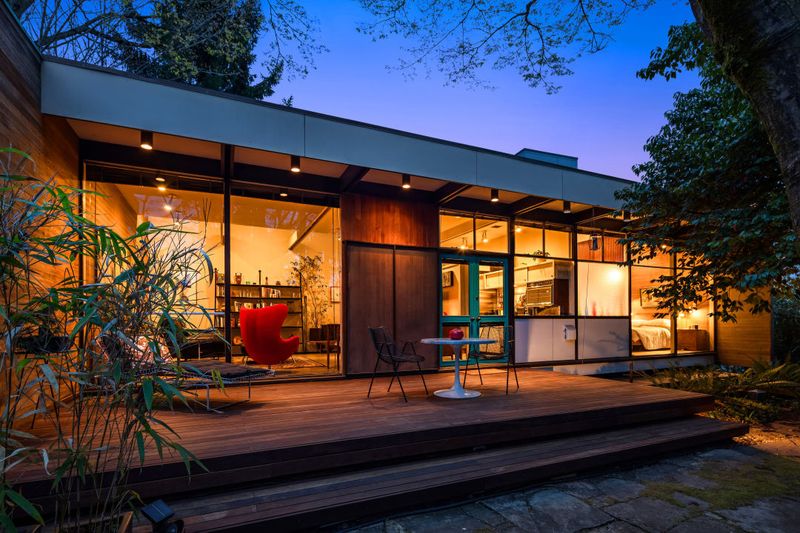
Scattered across Bellevue and Seattle’s hillsides, mid-century modern homes showcase large windows that frame spectacular views of Puget Sound or Lake Washington. Their flat or slightly pitched roofs create clean horizontal lines that complement the rolling landscape.
Open floor plans allow natural light to flood interior spaces, blurring the boundary between indoors and outdoors. Many feature dramatic stone fireplaces as striking focal points. Carports rather than garages mark these 1950s-1960s treasures, along with terrazzo floors and wood paneling.
Architects like Paul Thiry and Paul Hayden Kirk designed numerous examples around the region, making Washington a significant hub for this architectural style that celebrates both function and connection to nature.
3. Colonial Revival
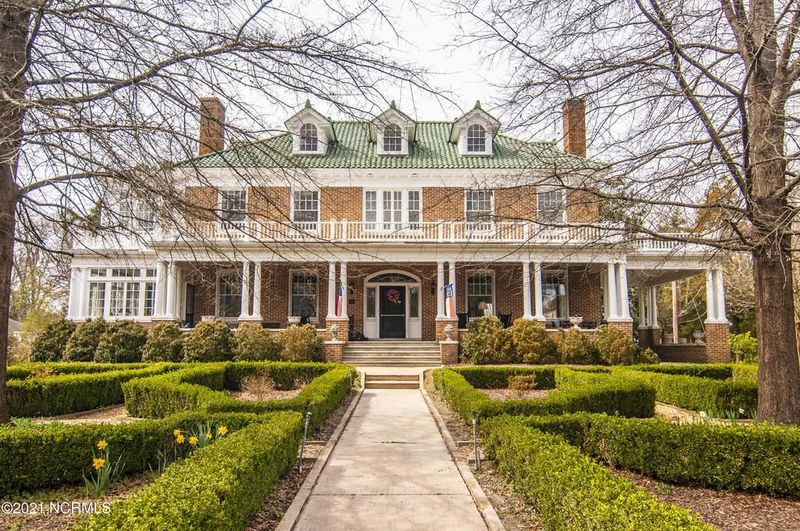
Stately and symmetrical, Colonial Revival homes grace many established neighborhoods in Tacoma and Spokane. Their brick or clapboard exteriors project permanence, while columns flank central doorways topped with decorative pediments or fanlight windows.
Shuttered windows line up precisely, creating a balanced façade that speaks of tradition and stability. Many feature side porches that offer shelter while entertaining outdoors despite Washington’s changeable weather. The style became popular during the 1920s-1940s as Americans embraced historical architectural references.
Inside, formal dining rooms and central hallways maintain the classic layout, though many have been updated for modern living. These dignified homes often anchor older neighborhoods, their mature landscaping and established gardens adding to their timeless appeal.
4. Contemporary Glass-and-Wood Homes
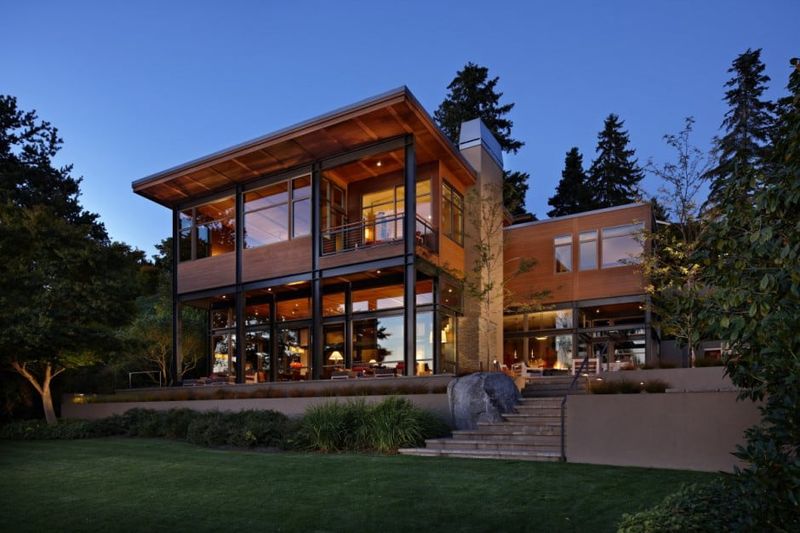
Perched on Seattle’s steeper slopes, these architectural showpieces feature walls of glass that capture breathtaking views of mountains and water. Cantilevered decks extend living spaces outward, creating dramatic silhouettes against the evergreen backdrop.
Architects cleverly incorporate cedar, fir, and other local woods alongside industrial materials like steel and concrete. Rain-screening techniques protect these modern marvels from Washington’s persistent moisture while maintaining their sleek profiles.
Many incorporate green roofs or solar panels, reflecting the region’s environmental consciousness. Interiors flow seamlessly between spaces, with minimal walls interrupting the panoramic vistas. Despite their contemporary appearance, these homes honor Pacific Northwest traditions through their use of natural materials and thoughtful placement within the landscape.
5. Seattle Box (Regional Foursquare)

Uniquely adapted to Seattle’s hilly terrain, these two-story boxes feature main entrances on the second floor, with lower levels built into slopes. Wide front porches topped with balconies provide outdoor living space despite compact city lots.
Generous bay windows capture precious daylight during gray winters, while dormers expand attic spaces into usable rooms. Their boxy shape maximizes interior space, making them practical family homes in dense urban neighborhoods. Built primarily between 1900-1910, Seattle Boxes often showcase Classical Revival details like dentil moldings and Tuscan columns.
Many survived the city’s numerous remodeling trends, though interior layouts have frequently been updated from their original formal room arrangements. These sturdy homes represent a clever regional adaptation of the American Foursquare style, perfectly suited to Seattle’s unique geography.
6. Pacific Lodge / Timber Retreat

Hidden among towering firs near Mount Rainier or along the Olympic Peninsula, these rustic retreats embrace massive timbers and local stone. Soaring great rooms center around monumental fireplaces where families gather during snowy winters.
Wraparound porches and outdoor fire pits extend living spaces into the forest during warmer months. Hand-hewn beams and locally-sourced materials connect these homes to their surroundings, often incorporating salvaged wood from historic structures. Many feature metal roofs that withstand heavy snow loads while creating a soothing soundtrack during rainfall.
Large windows frame specific views of mountains or water rather than exposing entire walls to the elements. These lodges represent Washington’s deep connection to its forests and outdoor lifestyle, providing sanctuary while respecting the power of the natural environment.
7. Tudor Revival Cottage
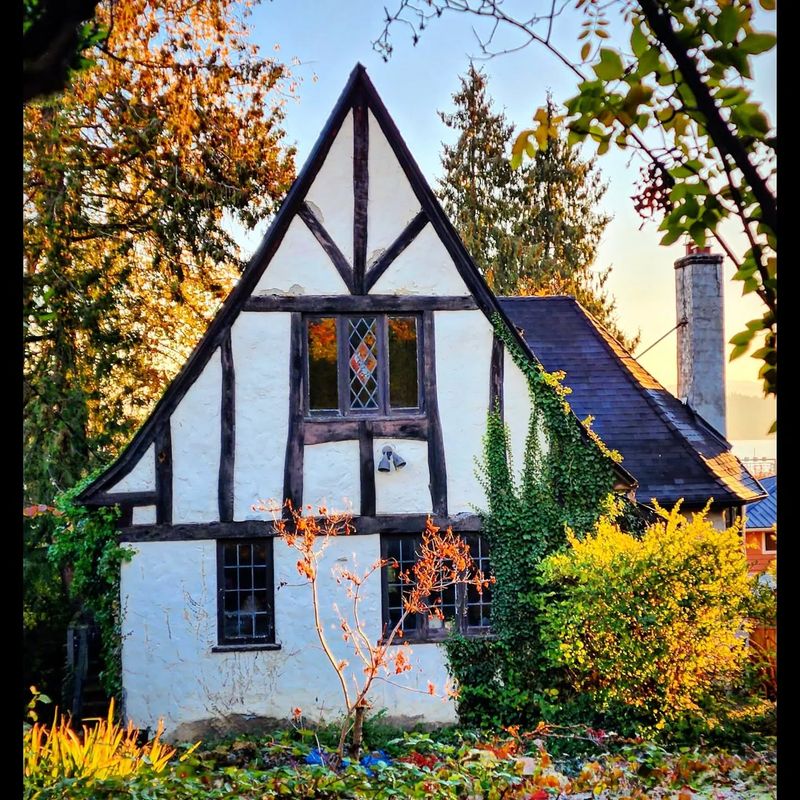
Scattered throughout older Seattle neighborhoods like Queen Anne and Capitol Hill, these storybook homes feature steep rooflines and decorative half-timbering against stucco exteriors. Arched doorways topped with rounded hoods create whimsical entrances, often accented with clinker brick or stone detailing.
Leaded glass windows with diamond panes filter light into cozy interior spaces. Many include charming features like built-in telephone nooks or reading alcoves tucked under stairs. Popular during the 1920s-1930s, these cottages offered an alternative to the Craftsman style that dominated earlier decades.
Their thick walls provide excellent insulation against Washington’s damp climate. Small but magical front gardens often feature old roses and boxwood hedges, enhancing their old-world European charm while creating private sanctuaries in busy urban settings.
8. Queen Anne Victorian
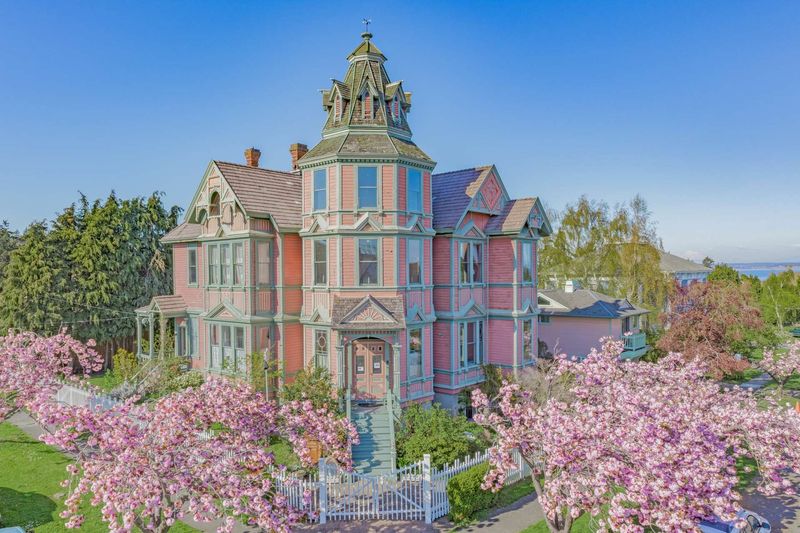
Grandly decorated with intricate wooden trim, these colorful landmarks stand tall in Port Townsend and other historic Washington towns. Round or octagonal towers topped with conical roofs create distinctive silhouettes against coastal skies.
Wraparound porches with delicate spindles provide sheltered outdoor spaces perfect for watching harbor activities. Many feature multiple paint colors that highlight their elaborate architectural details a practice that earned them the nickname “painted ladies.” Built during the 1880s-1900s when lumber was plentiful, these homes showcase the craftsmanship of early Washington settlers.
Asymmetrical facades with bay windows and multiple roof angles create visual interest from every direction. Though requiring significant maintenance, these Victorian beauties represent an important chapter in Washington’s development when optimistic communities established themselves along Puget Sound.
9. Stick-Style Residences
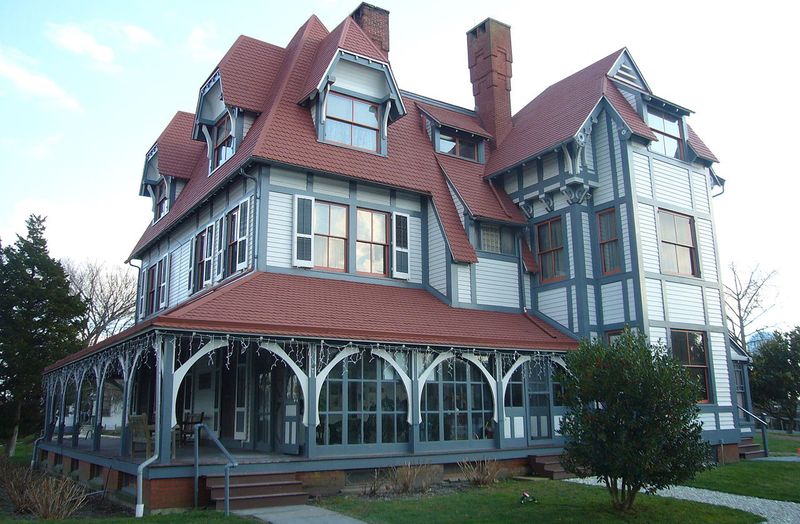
Wooden frameworks exposed on exterior walls create distinctive geometric patterns on these historic homes found in Coupeville and Port Gamble. Vertical, horizontal, and diagonal boards applied over clapboard siding create depth and visual texture that catches shadows throughout the day.
Steep roofs with decorative trusses at gable ends shed Washington’s heavy rainfall efficiently. Many feature small second-story balconies tucked under protective eaves. Developed during the 1860s-1890s when sawmills flourished in Washington Territory, these homes celebrate the region’s abundant timber resources. Their straightforward construction methods made them practical for growing communities.
Though less common than other Victorian styles, these architectural treasures represent an important transition period between Gothic Revival and Queen Anne designs, particularly in Washington’s earliest settled communities along shipping routes.
10. A‑Frame Vacation Cabins
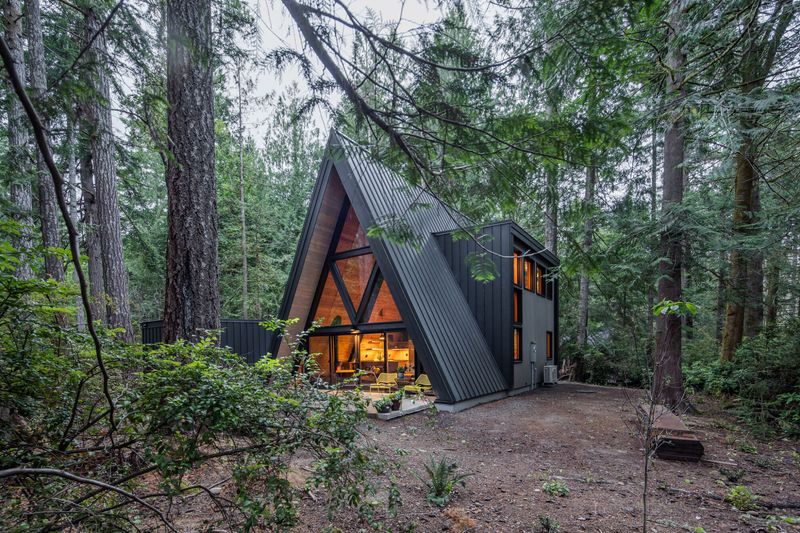
Dotting mountain communities near ski areas and lakeshores, these triangular retreats efficiently shed snow with their dramatically sloped roofs that often extend nearly to the ground. Large front-facing windows flood interiors with natural light while framing spectacular views of Mount Baker or Lake Chelan.
Compact footprints minimize site disturbance in sensitive forest locations. Lofted sleeping areas maximize limited square footage, creating cozy nests above main living spaces. Particularly popular during the 1950s-1970s as Washington’s middle class embraced outdoor recreation, these cabins represent affordable getaways still cherished by multiple generations.
Exterior materials typically include cedar shingles or vertical wood siding that weathers gracefully in forest settings. Though simple in form, these iconic structures perfectly embody Washington’s enduring love affair with nature and outdoor adventure.
11. Natural Cedar-Shingle Contemporary (Local Favorite)
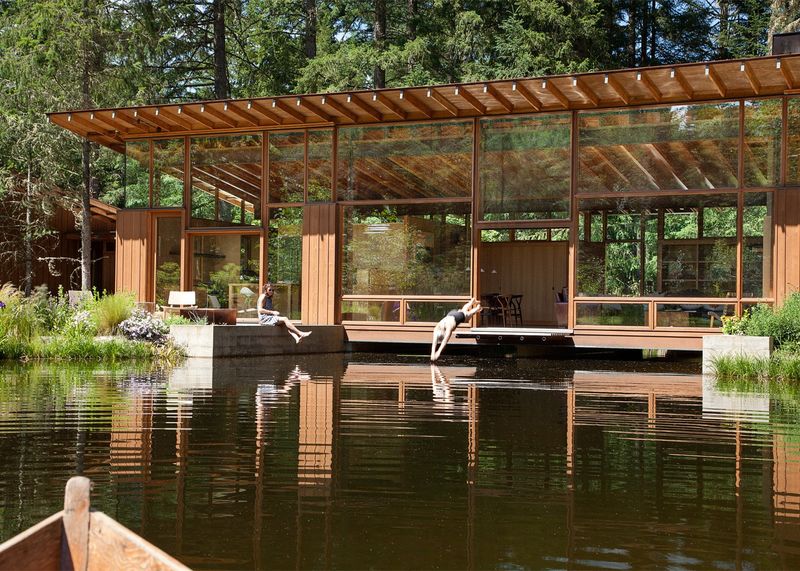
Emerging from Bainbridge Island’s forested landscapes, these distinctive homes wear untreated cedar shingles that weather to a silvery gray, blending seamlessly with surrounding tree trunks. Irregular rooflines with multiple levels follow natural terrain contours rather than imposing geometric order.
Architects like James Cutler pioneered this distinctly Northwestern approach, influencing residential design throughout the region. Protected entry courtyards create transitional spaces between forest and interior. Metal flashings develop rich patinas that complement the weathered wood. Windows are carefully placed to capture specific views while maintaining privacy and energy efficiency.
Unlike mainstream contemporary homes, these designs celebrate imperfection and natural aging processes. The style represents a uniquely Washington response to environmental concerns, embracing sustainable materials while creating dwellings that seem to have grown organically from their sites.
12. Covered Porches with Native Plants (Local Favorite)
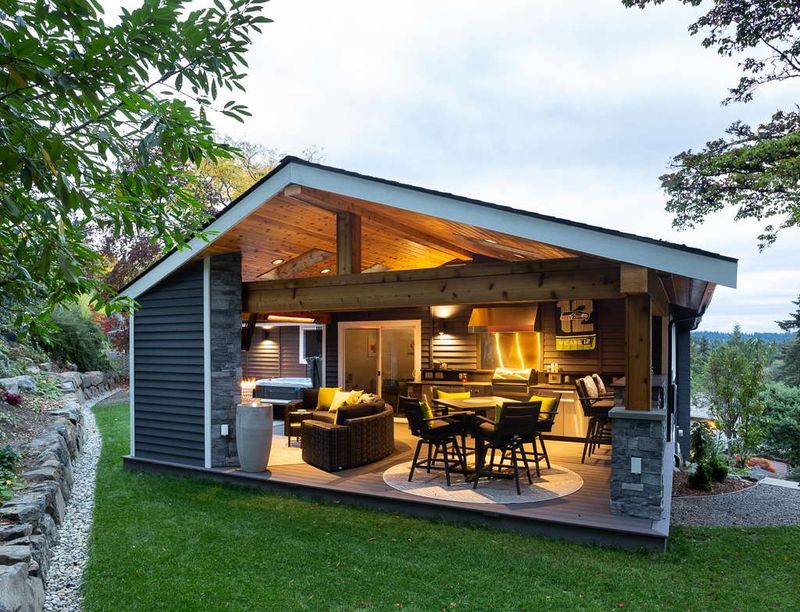
Extending living space outdoors despite frequent drizzle, these practical porches feature deep overhangs that shelter comfortable seating areas year-round. Cedar posts often support roof extensions, creating seamless transitions between home and garden.
Native plantings like sword ferns, salal, and vine maples surround these outdoor rooms, requiring minimal maintenance while providing habitat for local wildlife. Many incorporate rain chains instead of downspouts, transforming necessary drainage into meditative water features. Stone pathways connect porches to garden spaces, often incorporating locally-sourced materials like Wilkeson sandstone.
Fire pits or outdoor fireplaces extend evening use even during cooler months. This distinctly Washington approach to outdoor living acknowledges the region’s climate realities while celebrating its natural beauty, creating spaces where residents can enjoy fresh air and garden views regardless of weather conditions.
13. Rain Garden Landscaping Integration (Local Favorite)
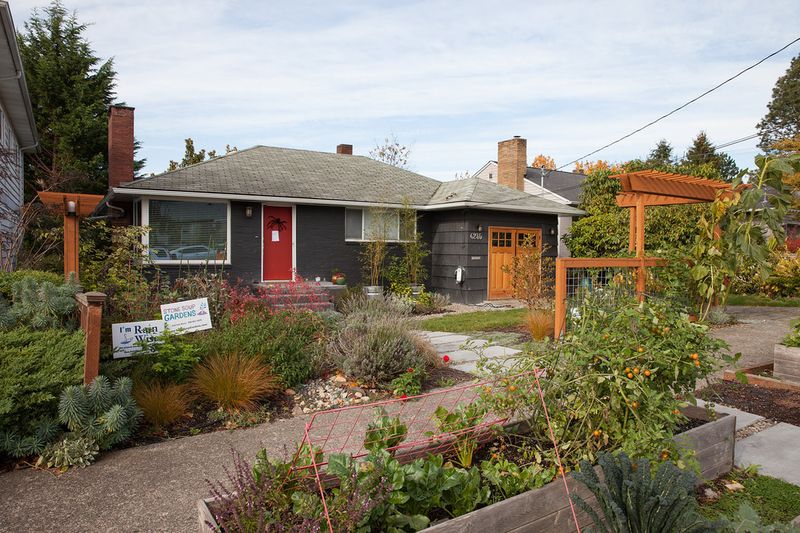
Pioneered in Seattle neighborhoods, these environmentally-conscious landscapes capture roof runoff in beautiful planted depressions rather than directing water to storm drains. Carefully selected native plants like Pacific Northwest iris and rushes thrive in periodically soggy conditions while filtering pollutants.
Permeable pathways made from crushed rock or specially designed pavers allow water to soak into soil rather than creating runoff. Many incorporate artistic rain chains or sculptural downspouts that celebrate rather than hide water movement. Beyond their practical function managing Washington’s abundant rainfall, these gardens create habitat for native pollinators and birds.
Local municipalities often offer incentives for homeowners who install these water-wise features. This distinctive approach to landscaping represents Washington’s growing environmental awareness and connection to natural systems, transforming a potential problem into a beautiful asset that enhances both individual properties and community watersheds.

